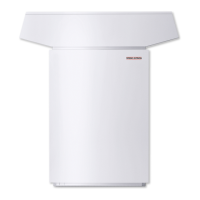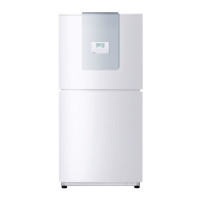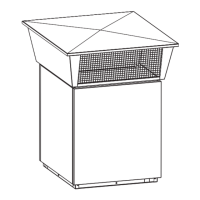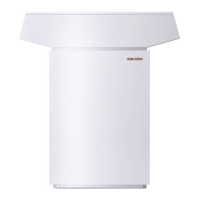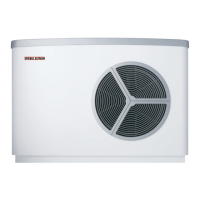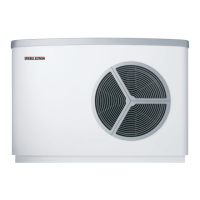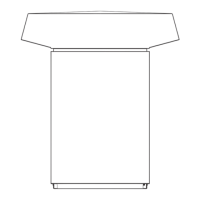INSTALLATION
Installation
12 |WPL ICS classic | WPL IKCS classic www.stiebel-eltron.com
!
Material losses
Provide common fuses/MCBs for the appliance control
cable and the heat pump manager.
Use cables with the relevant cross-sections. Observe the ap-
plicable national and regional regulations.
MCB/fuse
rating
Assignment Cable cross-section
1x B 16 A
Compressor
(single phase)
WPL09ICSclassic
WPL09IKCSclassic
2.5 mm² for routing through a wall
1.5 mm² when routing on a wall or in an
electrical conduit on a wall
1x B 25 A
Compressor
(single phase)
WPL17ICSclassic
WPL17IKCSclassic
4.0 mm² when routing in a wall
2.5 mm² when routing above the surface
1x B 16 A Control unit 1.5 mm²
2x B 16 A Electric emergency/
booster heater
2.5 mm²
The electrical data can be found in the chapter "Specification". The
bus requires a J-Y (St) 2x2x0.8mm² cable.
Note
The appliance includes an inverter for the variable speed
compressor. In the event of a fault, inverters can cause DC
residual currents. If RCDs are provided, they must be type
B, AC/DC-sensitive, with 30mA fuse protection.
A DC residual current can block type A RCDs.
Ensure that the appliance power supply is discon-
nected from the distribution board.
9.6 Buffer cylinder
!
Material losses
A buffer cylinder with diffusion-proof insulation is es-
sential to enable cooling by means of fan convectors. The
emergency/booster heater must be connected.
Note
When providing cooling via an underfloor heating system
no buffer cylinder is required.
We recommend the use of a buffer cylinder to ensure trouble-free
appliance operation.
The buffer cylinder provides hydraulic separation of the volume
flows in the heat pump circuit and heating circuit, and also serves
as an energy source for defrosting.
If operating the appliance without a buffer cylinder, observe
the details specified in chapter “Minimum flow rate with in-
dividual room control via FET/ FE7 in systems without buffer
cylinder”.
Note
For operation without a buffer cylinder, we recommend
installing an electric emergency/booster heater (DHC).
If you do not install an emergency/booster heater,
activate the WW LEARNING FUNCTION parameter in
the WPM heat pump manager for fault-free opera-
tion.
10. Installation
10.1 Transport
If possible, transport the appliance to the installation site on the
non-returnable pallet. Alternatively, transport the appliance using
a sack truck, creeper board or tension belt, which can be posi-
tioned around the left-hand adjustable feet as a carrying strap.
When transporting the appliance, be aware of its centre of
gravity.
Protect the appliance against heavy impact during transport.
- If the appliance needs to be tilted during transport, this
must only be for a short time and onto the r.h. side panel.
Ensure that the John Guest connectors point upwards during
transport.
- The longer the appliance is tilted, the greater the distribution
of refrigerant oil inside the system.
Wait approximately 30minutes before starting the appliance
after it has been tilted.
If possible, transport the appliance in its packaging.
!
Material losses
If the appliance is transported without packing and with-
out using a pallet, its outer casing may be damaged.
To prevent this, remove the side and front panels (see
chapter "Fitting the appliance casing").
Note
You may need to remove the front panel to manoeuvre
the appliance through a door (see chapter "Fitting the
appliance casing").
766
766
D0000073954
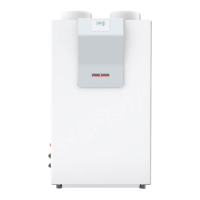
